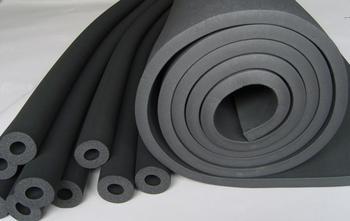 According to recent business club data, the rubber and plastic market showed a slight upward trend in May, with some improvement in the imbalance between supply and demand compared to the previous month. Analysts note that while the market saw modest gains, underlying demand remained weak, suggesting that the overall situation is still fragile.
Xue Jinlei, a business analyst, pointed out that May’s performance was slightly better than April, driven by rising input costs and tighter supply conditions. However, he emphasized that demand has not seen any significant improvement, and this lack of strong demand could lead to further volatility. Xue warns that the market may face another downturn in June, urging investors to remain cautious.
Looking at price movements, 11 out of the monitored products in the rubber and plastics sector experienced price increases in May, representing about 5% of the total. Among them, one product saw a rise of over 5%, with the top three being butyl rubber 1751 (up 6.77%), LDPE (up 4.02%), and HDPE (up 2.93%). On the other hand, six products saw declines, with POM falling the most (-3.91%), followed by nitrile rubber N41 (-3.03%) and butadiene rubber (-2.35%).
From a supply and demand perspective, the general plastics sector showed improved balance. Since April, an increase in petrochemical plant maintenance has reduced production capacity, leading to declining inventories. This trend continued into May, with shortages reported for certain products like polyethylene and polystyrene. Limited production combined with price support helped stabilize the market.
However, the supply-demand gap remains tight in synthetic and natural rubber markets. Natural rubber, in particular, is still undergoing inventory reduction, and the introduction of new plastic alternatives has added pressure. Meanwhile, the downstream tire industry continues to show sluggish activity, with many manufacturers cutting production and offering discounts to stimulate sales. This ongoing weakness suggests that the rubber and plastic sector will need more time before a full recovery is seen.
According to recent business club data, the rubber and plastic market showed a slight upward trend in May, with some improvement in the imbalance between supply and demand compared to the previous month. Analysts note that while the market saw modest gains, underlying demand remained weak, suggesting that the overall situation is still fragile.
Xue Jinlei, a business analyst, pointed out that May’s performance was slightly better than April, driven by rising input costs and tighter supply conditions. However, he emphasized that demand has not seen any significant improvement, and this lack of strong demand could lead to further volatility. Xue warns that the market may face another downturn in June, urging investors to remain cautious.
Looking at price movements, 11 out of the monitored products in the rubber and plastics sector experienced price increases in May, representing about 5% of the total. Among them, one product saw a rise of over 5%, with the top three being butyl rubber 1751 (up 6.77%), LDPE (up 4.02%), and HDPE (up 2.93%). On the other hand, six products saw declines, with POM falling the most (-3.91%), followed by nitrile rubber N41 (-3.03%) and butadiene rubber (-2.35%).
From a supply and demand perspective, the general plastics sector showed improved balance. Since April, an increase in petrochemical plant maintenance has reduced production capacity, leading to declining inventories. This trend continued into May, with shortages reported for certain products like polyethylene and polystyrene. Limited production combined with price support helped stabilize the market.
However, the supply-demand gap remains tight in synthetic and natural rubber markets. Natural rubber, in particular, is still undergoing inventory reduction, and the introduction of new plastic alternatives has added pressure. Meanwhile, the downstream tire industry continues to show sluggish activity, with many manufacturers cutting production and offering discounts to stimulate sales. This ongoing weakness suggests that the rubber and plastic sector will need more time before a full recovery is seen.Zhejiang Sealand Technology Co., Ltd. is a trustworthy manufacturer of Mass Flow Meter Coriolis, Flow Meter Coriolis, Mass Flowmeter Coriolis, Mass Meter Coriolis, Meter Coriolis, Flowmeter Coriolis, ISO/ IEC 17025 standard.
Sealand meter is certified by Zhejiang Institute of Metrology. To get such certificate, Sealand has to send all models to Zhejiang Institute of Metrology and all models are tested in their calibration lab. The lab is an ISO/IEC 17025:2005 standard lab approved by CNAS (China National Accreditation Service for Conformity Assessment). CNAS is a member of ILAC (International Laboratory Accreditation Cooperation).
Mass Flow Meter Coriolis, Flow Meter Coriolis, Mass Flowmeter Coriolis, Mass Meter Coriolis, Meter Coriolis, Flowmeter Coriolis
Zhejiang Sealand Technology Co., Ltd. , https://www.sealandflowmeter.com